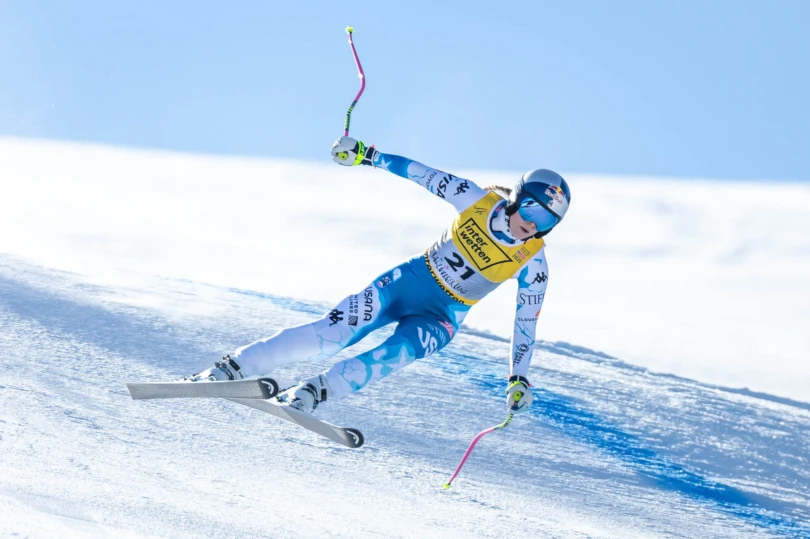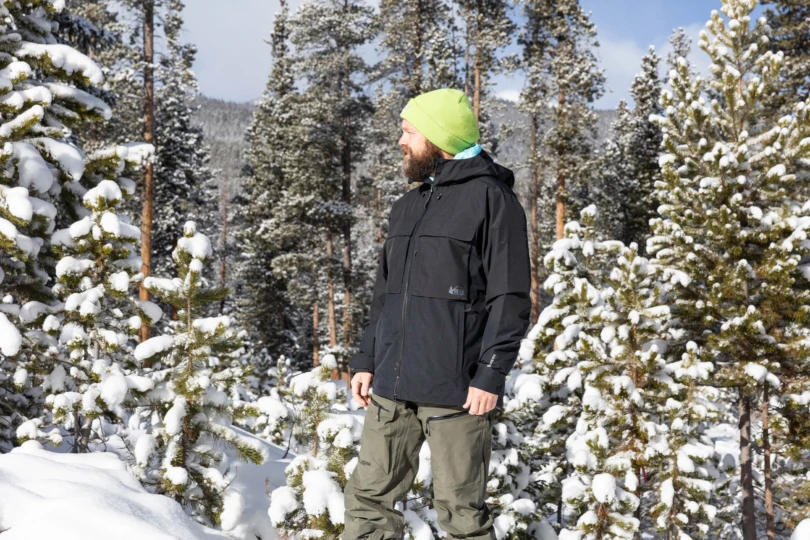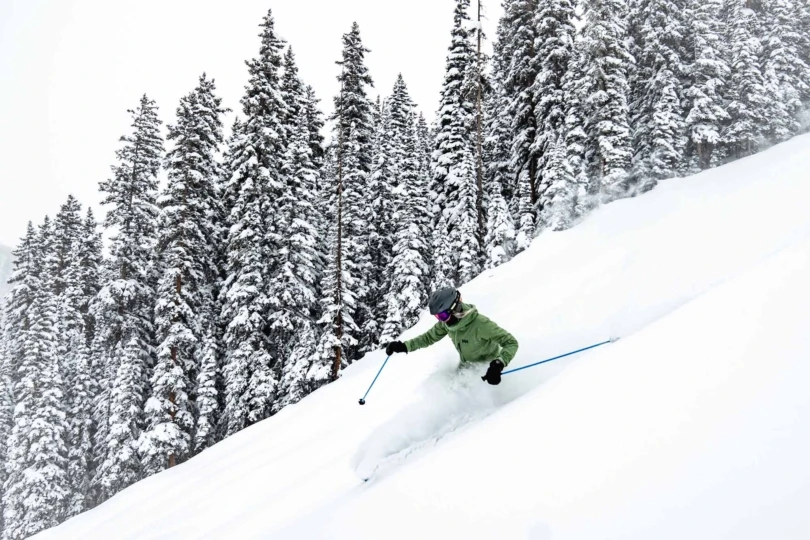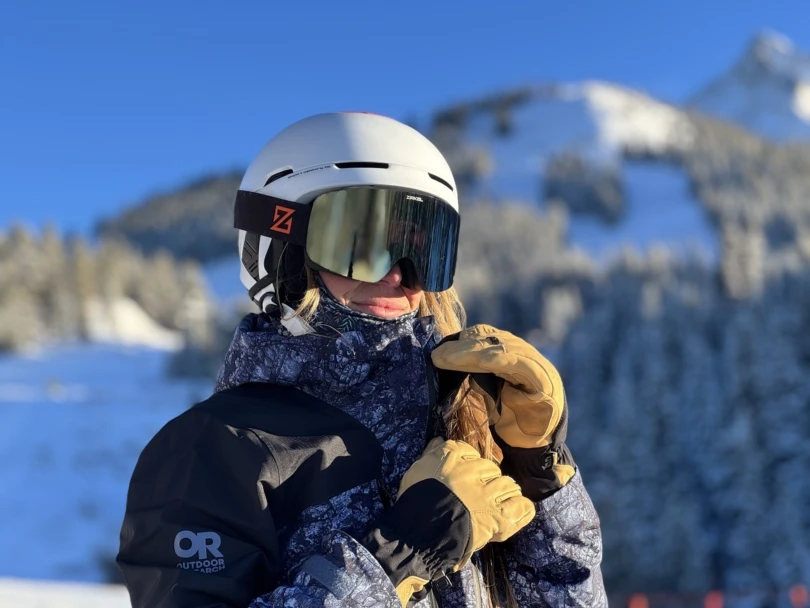All across the northern hemisphere, people wait for the first snow to hit, and ski season starts back up. If you’re new to the sport, learning to downhill ski can seem daunting. But once you learn how, it’s a freedom unlike anything else.
No matter your age, learning how to ski is a challenge worth taking on. Remember to be patient and take the process step by step. This guide will help you get to a place where steep slopes are what you seek out, rather than avoid.
With this guide, we’ll run through the basics of how to ski, including how to turn on skis, move uphill, and ski in a wedge. We only intend this primer to help you build some background knowledge. But it won’t take the place of real-world lessons.
For new skiers, there are many great deals for introductory lessons and ski rentals. Take advantage of these and learn from a trained professional. But before your lesson, read up on some of what you can expect to help you get ahead of the curve.
How to Ski
Dressing the Part
When dressing to go downhill skiing, warmth is a priority. Once you’ve got the basics of how to ski, gliding down the slopes will expose your whole body to cold wind. Our article on Best Face Coverings will help you keep frostbite away from your cheeks — keeping you warm and happy on the slopes.
In addition to warmth, breathability and waterproofness are key to a great day on the slopes. It can be easy to forget that snow is just cold water, but it will remind you while soaking through your blue jeans on a -10-degree day. Seek out high-quality gear that provides warmth and breathability while keeping your base layers dry.

The Gear
Ski resorts, winter sports stores, and even REI offer full gear rental, which is a real help when you’re just starting out. These shops have professionals that can introduce the gear, help you understand the basics, and make sure that your boots have the right fit.
Try out different gear before buying your own, as investing in ski equipment is pricey. While it can be tempting to jump on winter deals right away, it’s important to find the right fit for each skiing ability and body type.
Many resorts offer great deals for new skiers. These packages often include lift tickets, gear rental, and lessons all for one heavily discounted price. Be sure to ask for or research deals for new skiers before heading to the slopes for the first time!
Know the Difficulty
Before ever getting out onto your skis, take some time to familiarize yourself with the signage used at the ski resort. Most resorts in North America use similar symbology, but they do vary slightly from location to location.
Almost all North American resorts use a simple system. Green circles indicate the easiest runs. Blue squares are intermediate, and black diamonds are the most difficult. There are variances to each of these, but that’s the basis for most on-mountain difficulty ratings.
This is the system used in North America. Ski resorts in different parts of the world use other systems, so be sure to research the local signage when you ski in new places.

Find the Proper Stance
A proper ski stance provides stability and control while you move across the slope. Falling while skiing is most often due to poor form, and falls are easily avoided by maintaining the correct form.
Standing tall, bend your knees slightly and lean your shins slightly forward. Ski boots are made to support the weight pushing forward on them, allowing you to control your skis better with a little pressure.
Keep your shoulders slightly in front of your hips, and keep your feet shoulder length apart. Your arms will stay bent in front of you and to the side. In this position, hold the poles with the tips pointed behind you, just behind your feet.
Now, keep your eyes ahead of you rather than down at the skis. It’s time to move!
How to Glide
Starting on level ground, assume the proper stance and use your poles to push yourself forward. Keep your weight balanced over your feet and your shins pressed forward. Move around like this until you’re comfortable gliding on level ground.
Next, move to a slight incline and practice pushing off and letting gravity continue the process. Keep your eyes forward and focus on your form. Glide forward and let yourself come to a natural stop.
Repeat this over and over, getting a feel for how your balance shifts while in motion. With repetition comes muscle memory, which will make it easier to ski on an incline later on.

Moving Uphill
There are times we need to move uphill, and it can be surprisingly difficult. This is why knowing how to sidestep is a must when learning how to ski.
Sidestepping is exactly as it sounds. With both skis facing horizontally to the hill’s slope, roll the skis slightly into the incline using the sides to dig into the snow slightly.
Push off the downhill ski and step sideways and up simultaneously. Transfer your weight to the first ski and bring the downhill ski back up to parallel with your other ski. Then, repeat until you’ve reached your destination.
Another method of moving uphill is referred to as herringboning. With this method, you will face uphill and place your skis in a V with the point facing downhill. Relaxing your knees a little will allow for the skis’ inside edges to dig into the snow. With this form, taking small steps uphill will slowly but surely get you where you need to be.
Skiing in a Wedge
Skiing in a wedge, often referred to as pizza or snowplow, helps you slow your speed, gain control, and come to a stop when learning how to ski.
To pizza, place your skis in a V, with the point in front of you. Your skis should remain relatively flat while moving, as applying pressure to the inside edges will help you stop faster.
While moving, the wider the wedge is, the slower the speed. Practice moving down a low-grade hill and playing with the different angles of your pizza. French fries, when your skis are completely parallel, will give you the most speed while a pizza will provide a much slower experience.

How to Turn on Skis
Once you’re comfortable with a wedge formation, it’s time to learn how to turn on skis.
With the proper wedge, practice twisting your legs to move both skis in the direction you want to turn. The downhill ski will have a bit more pressure on it, but both will stay in a wedge shape.
Continue to practice moving in a wedge and turning both ways, alternating your downhill ski. Then, come to a full stop by turning completely horizontal to the slope.
This is the most foundational level of downhill skiing and is something you can expect to do during your first day of lessons. Everything will grow out of these initial skills. With practice, you’ll be making parallel turns down the mountain in no time.
Skiing is referred to as “easier to learn, but harder to master” than snowboarding. The basics are simple but can still prove to be a challenge.
Have patience with yourself and don’t rush into anything too difficult. As you progress, you’ll learn how to ski moguls, ski powder, and feel comfortable cruising down double black diamonds.







